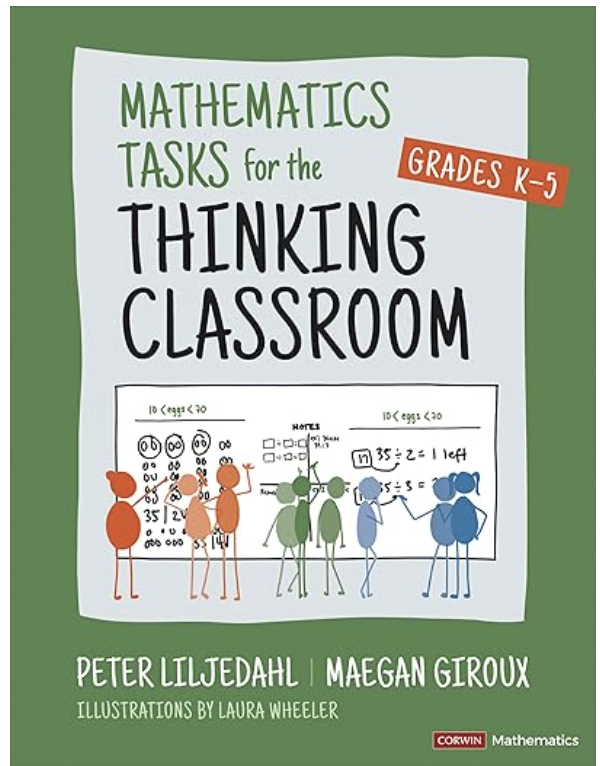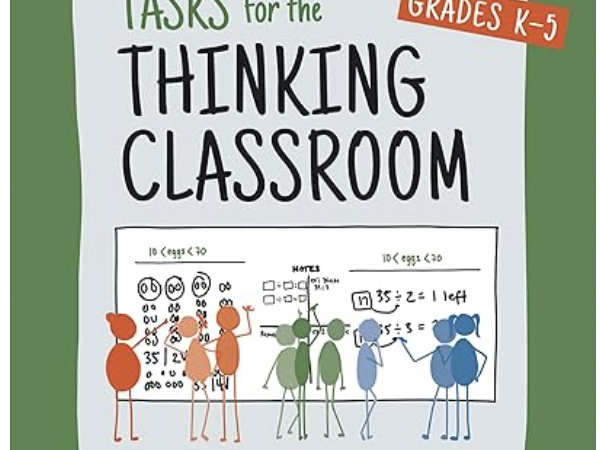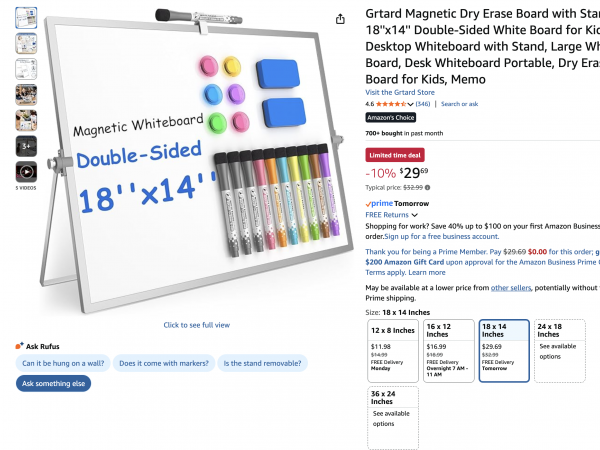

Grade: K-5
Teacher Name: Natalie McDaniel, Amanda Stone, and Courtney Tinch
Description and purpose of grant:
We are requesting funding to purchase tabletop whiteboards for our classroom to help students think, collaborate, and problem-solve more effectively during math instruction. These whiteboards will allow students to show their thinking in real time, work together to solve problems, and learn from one another’s ideas — all key skills they need for future success.
In our classroom, students begin math class each day by working on “math tasks” — hands-on challenges that are designed to meet every learner where they are and stretch their thinking. These tasks are:
-
Low floor: Every student can start, no matter their current level.
-
High ceiling: Each task becomes more challenging as students dig deeper, encouraging productive struggle — a key part of learning.
-
Novel: The tasks are new and unfamiliar, pushing students to think creatively and try multiple strategies.
This approach aligns directly with Coppell ISD’s core values:
-
Great Teaching: Empowering students to become critical thinkers and problem solvers.
-
Collective Engagement: Encouraging collaboration and communication among students.
-
Valuing Each Individual: Ensuring every student can contribute meaningfully and feel their ideas are important.
While these tasks are powerful on their own, educational research shows that where students complete them matters just as much as the tasks themselves. In his landmark book Building Thinking Classrooms, Dr. Peter Liljedahl studied classrooms for over 15 years to find the best ways to structure learning. One of his most significant findings was the impact of vertical, non-permanent surfaces — like standing whiteboards — on student engagement and learning.
Liljedahl’s research also shows the ideal group sizes to maximize collaboration:
-
For grades 3–5, groups of three students provide the best balance of diverse ideas and manageable dynamics.
-
For grades K–2, groups of two students work best for younger learners.
When students work in these small groups at vertical whiteboards, research shows dramatic improvements:
-
Eagerness to participate: 3.0 vs. 2.3 (on a 3-point scale)
-
Student discussion: 2.8 vs. 2.2
-
Collaboration and participation: 2.8 vs. 2.1
-
Time to start writing math: ~20 seconds vs. over 2 minutes on paper
Standing to work reduces anonymity, increases visibility, and encourages students to share ideas, take risks, and support one another — exactly the kind of classroom environment we want to create. Using optimal group sizes ensures that each student actively contributes, while still allowing for a diversity of thinking and meaningful collaboration.
Unfortunately, our classroom lacks sufficient wall space to install large vertical boards. Purchasing tabletop whiteboards will allow us to recreate many of the same benefits of a vertical workspace — students can still stand, share, and collaborate around a shared board, but in a flexible and space-efficient way.
This small shift will have a big impact: more engagement, deeper thinking, stronger problem-solving skills, and a classroom culture where every student feels valued and capable. Your support will help us transform daily math learning into an experience that builds collaboration, curiosity, and confidence — preparing students not just for tests, but for the real-world challenges ahead.
Implementation process:
We plan to use these tabletop whiteboards for students in grades kindergarten–5 during math instruction for multiple years. Each board will be shared by three students, and we expect the boards to last at least seven years. If a board is damaged beyond use, it can be easily replaced.
These whiteboards will allow students to stand and work collaboratively on math tasks, showing their thinking in real time, problem-solving together, and learning from one another. Research from Building Thinking Classrooms by Peter Liljedahl shows that when students work on vertical, non-permanent surfaces, they are more engaged, participate more, take risks, and collaborate more effectively than when working at desks or on paper.
All educators have access to Liljedahl’s book and can begin implementing additional routines and strategies from the research. Additionally, the district has already provided Math Academy training on Building Thinking Classrooms for 3rd–5th grade teachers in October. Kindergarten through 2nd grade training will be completed in the spring.
To ensure consistent and effective use, the grant writers will conduct a school-level professional learning session for 3rd–5th grade math teachers. This training will cover:
-
The purpose of the whiteboards and the research supporting their use.
-
How and when math tasks should be introduced during instruction.
-
How students should work together during tasks to maximize collaboration and engagement.
The boards will be used daily during the “math task” portion of instruction. During this time, students will tackle tasks designed to be low floor, high ceiling, and novel, meaning that every student can start, all students are challenged, and tasks encourage creative thinking and multiple solution strategies. By using the boards, we aim to increase participation, engagement, and collaboration for all students.
This initiative will directly impact approximately 245 students in grades 3–5. Once K–2 teachers complete their training in the spring, these students will also benefit, extending the positive impact across all grade levels. By supporting active engagement and collaborative problem-solving, this project aligns directly with Coppell ISD’s core values of Great Teaching, Collective Engagement, and Valuing Each Student’s Individual Contribution.
Items you plan to purchase with grant money
Table Top Whiteboards- 18x14
In the event my grant is not fully funded, this is minimum amount I would need to get started on this project:
$1,714.16
In the event it is not fully found, this amount would allow 3-5 grades to implement Building Thinking Classrooms.


